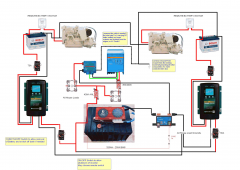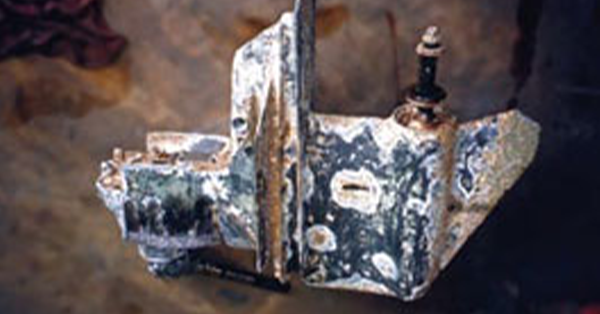Hi Guys - OK so not a solar question but one that seems to be evading google
I am installing a Multiplus 12/3000 240v. I have all the wiring done and am looking at the grounding side. Victron are vague on it, ABYC (im in aus so not relavent apart from reference) state that one size down from the main battery cable is acceptable. However on the diagrams on victrons site they show a ground wire going back to the negative bus bar (large) and then a ground going from that (no detail but appears small)
So i have a 120mm2 going from the case ground to the negative bus bar - thats fine. But as the house services power system (including inverter) are completely remote to the engines (main DC point) and mains AC point where is connects to the common DC ground, am i now assuming I have to connect the bus bar up to the common DC Ground? If so is it with 120mm2?
So on the attached image its the dotted black cable from the lynx.. what size???? (ac wiring isnt show obviously)

I am installing a Multiplus 12/3000 240v. I have all the wiring done and am looking at the grounding side. Victron are vague on it, ABYC (im in aus so not relavent apart from reference) state that one size down from the main battery cable is acceptable. However on the diagrams on victrons site they show a ground wire going back to the negative bus bar (large) and then a ground going from that (no detail but appears small)
So i have a 120mm2 going from the case ground to the negative bus bar - thats fine. But as the house services power system (including inverter) are completely remote to the engines (main DC point) and mains AC point where is connects to the common DC ground, am i now assuming I have to connect the bus bar up to the common DC Ground? If so is it with 120mm2?
So on the attached image its the dotted black cable from the lynx.. what size???? (ac wiring isnt show obviously)




